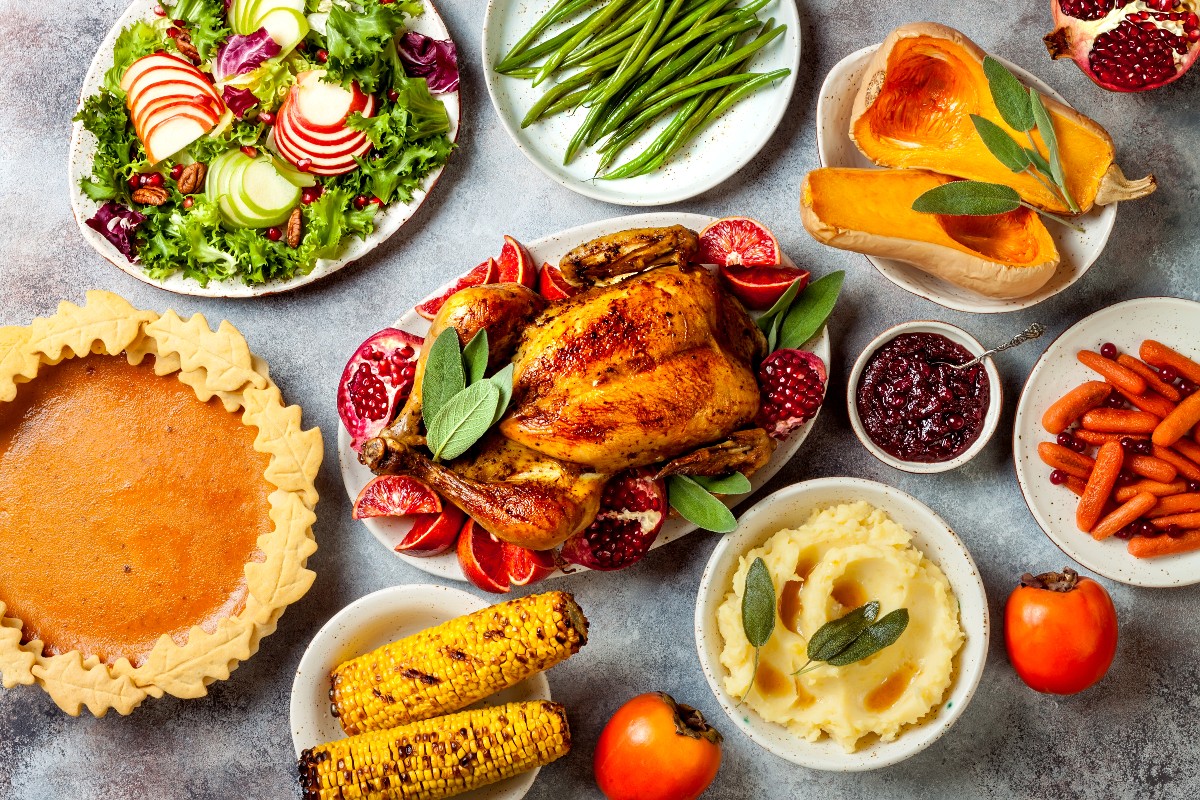No need to feel guilty after Thanksgiving dinner!
“Traditional Thanksgiving meals can be loaded with unwanted fat and calories, but with the right choices and preparation methods, the traditional Thanksgiving meal can be transformed into a healthier, flavorful and nutrition-packed meal,” says Alison Manger-Weikel, Director of System Clinical Nutrition for Riverside. “For example, turkey is a great source of protein, vitamins and minerals. Sweet potatoes contain fiber and antioxidants that fight disease. Cranberries have antioxidant properties that may reduce risk for heart disease and pumpkin is packed with potassium which may help to regulate blood pressure and aid in overall body function.”
The key is to prepare these nutritious foods — and make them taste good — without adding lots of butter, cream and salt. Read on to learn seven ways to make your Thanksgiving menu healthier.
1. Keep your turkey tasty yet low-fat
Yes, the turkey maybe the star of the show. But instead of a whole turkey, consider cooking a turkey breast. The breast contains white meat, which is lower in fat and calories than the dark meat in the thighs and legs.
According to the U.S. Department of Agriculture (USDA), a three-ounce serving of roasted turkey breast will provide you about 160 calories and 6 grams of fat. Compare that with a serving of dark meat, which contains 190 calories and 10 grams of fat.
Whether you cook a whole turkey or just a breast, try these tips:
- Roast your turkey in its own juices. Don’t deep fry.
- Avoid turkeys labeled “self-basting.” (Manufacturers inject most self-basting birds with a solution of salt, liquid and fat.)
- Instead of rubbing butter on the outside of your turkey or underneath the skin, spray it with cooking oil and season lightly with salt and pepper.
- To add flavor, create a rub with light olive oil and fresh herbs, such as tarragon, sage, thyme, rosemary and oregano.
- To help keep whole turkeys moist, stuff the inside with oranges, lemons, limes or grapefruit.
- Roast your turkey on a bed of vegetables with reduced-fat, low-sodium broth to add moisture and even more flavor.
- When it’s time to eat, remove the skin. The skin contains saturated (unhealthy) fat.
2. When making gravy, skip the flour
Instead, top your turkey with a clear, thin gravy made with reduced-fat chicken broth or turkey stock.
3. Boost the nutrition in your stuffing
Replace white bread cubes with 100% whole wheat, whole grain bread. Add mushrooms, carrots, celery, peppers, apples or cranberries. For extra nutrition, mix in chopped pumpkin seeds and nuts. If you love sausage stuffing, use lower-fat sausage and control your portion size.
“Placing the bread stuffing inside the turkey can absorb extra fat and provide a perfect environment for growing harmful bacteria if it does not fully reach an internal temperature of 165 degrees F,” says Alison. “Heating the interior of the stuffing to this temperature can leave the turkey over-cooked and dry. It is best to cook the bread stuffing in a covered casserole and moisten with broth as needed for serving.”
For a healthy twist, try this cranberry apple farro stuffing recipe from the USDA.
4. Enjoy colorful cranberries — with no added sugar
While canned cranberry sauce is convenient, you can make your own version with fresh cranberries. Cook the berries in a saucepan with water. Add natural sweetness with a teaspoon or two of honey, a splash of orange juice and frozen blueberries.
5. Fill half your plate with fresh, roasted vegetables
Try sweet potatoes, squash, carrots, Brussels sprouts, and cauliflower as healthy sides. To bring out the natural flavors, drizzle with olive oil, add a pinch of salt and roast them in the oven.
6. Skip the creamy casseroles — or lighten them up
Instead of mashed potatoes, consider mashed cauliflower prepared with parmesan cheese, minced garlic and fat-free Greek yogurt.
If your guests love the traditional green bean casserole, the American Heart Association suggests making a healthier version using low-fat sour cream and low-fat mushroom soup. Skip the fried onions, and top with fresh onion slices instead. Or, create a creamy flavor using Swiss cheese and this recipe from the American Diabetes Association.
7. For dessert, enjoy a slice of pumpkin pie — without the crust
If you eliminate the crust from your favorite holiday pie, you’ll save lots of fat and calories. Just pour the pumpkin mixture into your regular pie pan, or individual custard cups, and bake. Try the same trick with chocolate, pecan and fruit pies, too. If you must have a crust, enjoy only one layer — on the bottom or top.
